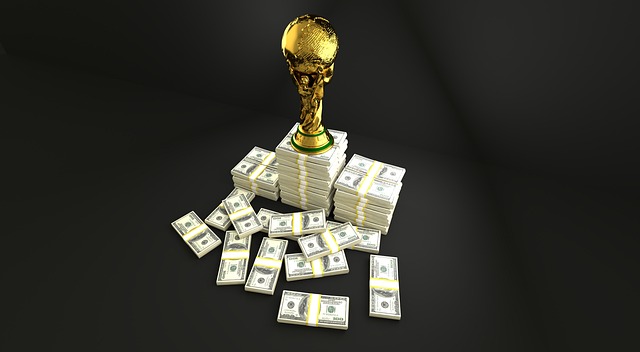Sports are an important part of the lives of billions. Nevertheless, we don’t often consider the role of money in how our favourite teams operate. For most people who follow a team, watch the stars, and continuously relive the latest wins and losses, the astronomical amount of money in sports remains an abstract idea. But exciting questions abound.
For example, where does the money come from? Is it all ticket and jersey sales? And where does it go? Is it just huge salaries, or is there more to it? This article will provide an overview of how money flows in the sports world, bringing profit in return for entertainment and sustaining a considerable segment of the international economy.
The Size of the Global Sports Market
In 2020, the global sports market was estimated to be worth roughly $388 billion. As significant a figure as that is, it was down from $459 billion the previous year because of COVID’s disruptive effects. Nevertheless, people’s thirst for the competition is insatiable, and this market is expected to be worth $600 billion by 2025 and then $826 billion five years later. These figures alone illustrate the economic effects of sports as an institution. But where does the money come from?
Sources of Revenue for Our Favourite Clubs
As of 2018, there were 106 worldwide sports franchises valued at more than $1 billion apiece, each earning millions of dollars annually. The income is divided into three basic categories: fan-based revenue, licensing and merchandising, and advertisement.
Fan-Based Revenue
Fan-based revenue is exactly what it sounds like – money earned by fans who watch and listen to games in-person, on TV, and on the radio. Specific revenue streams include ticket sales, concessions, parking fees, and broadcast/streaming rights. ABC (ESPN), NBC, CBS, FOX, SKY, Amazon, and other companies pay large sums to sports clubs for the right to stream their events.
The average NFL football stadium seats 70,000 people, and tickets typically sell for roughly $150 apiece. To gain extra money, teams may opt to organise non-football-related events such as concerts in their stadiums, or they may rebuild their stadiums to add additional seats or concessions. While food and drinks do not generate as much money as other revenue sources, their margins are very high.
Merchandising and Licensing Agreements
Professional sports teams also generate money by putting their logos, club colours, and player likenesses on items. This allows fans to purchase team clothing, equipment, and other merchandise to express their support for their favourite club(s). In addition, clubs, leagues, and associations will license their branding.
One example of licensing is the 10-year agreement announced by Nike and the NFL with sports store Fanatics in 2018. While we don’t know how much Fanatics paid for this privilege, it was most certainly a sizable sum considering that Fanatics now has the exclusive authority to produce and market Nike-branded NFL adult products.
Advertising and Corporate Sponsorship
Corporate marketers understand how profitable and important the sports business is and are always searching for ways to capitalise on it. As a result, sports advertising and corporate sponsorships have high price tags. For example, advertisers may collaborate with one of the sports leagues or work with a prominent player to become a spokesperson for their brand.
Corporate sponsors will also pay professional sports teams to include their brand on their products and jerseys or to rename their stadium after their firm. A famous example is the carrier Emirates buying the naming rights of Arsenal FC’s Ashburton Grove in London.
The Huge Expenses of Running a Sports Team
The many revenue streams of a professional sports team (some of them very large!) fund equally large expenditures. For instance, the NFL’s Green Bay Packer spent $410 million on operating expenses in 2021. This was used to pay the players’ salaries, maintain the stadium, cover team and administrative expenses, and fund an aggressive marketing campaign.
Many professional sports teams also operate their youth academies. For example, while the costs vary, many of the biggest European soccer clubs spend over $5 million annually on youth operations to ensure a steady influx of rising talent.
When money comes in, regardless of the sport, it is divided among the team’s players and owners. However, each sport has its own set of rules. As of 2021, for example, the NFL agreed to pay its players around 48% of the revenue, but the NBA and MLB typically retain that amount a little higher at approximately 49-51%. It’s a 50/50 split in the NHL, while EPL teams often dedicate more than 60% of their revenue to player salaries.
The Bottom Line: A Sports Team Is Big Business and Must Operate Like One
We all know sports are big money, but we tend to think only of hefty transfer fees and yearly salaries for superstars. However, the operation of a large sports club is complex, and there are many revenue streams to match the plethora of expenses. Essentially, they need to operate under similar constraints to any other multi-million (or billion!) dollar business. So, the next time you buy a ticket to a live sports event, put on your favourite player’s jersey, or tune in to Monday Night Football, consider the part you play in this complex economic and entertainment powerhouse.
